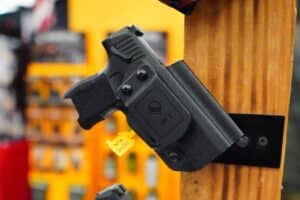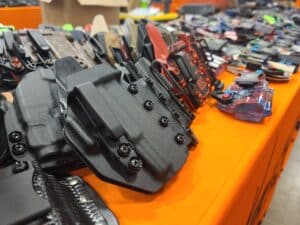We have a packed newsletter for you guys this week.
In his interview with ABC News, Alec Baldwin revealed the underlying problem on the set of “Rust” which led to the deadly shooting of Halyna Hutchins. There has been plenty of discussion about how a live round got on set. Or Baldwin’s claim he didn’t pull the trigger of the gun. Those are important, but not enough attention has been paid to the culture that enabled this tragedy to unfold.
We also have a hard look at why police in California keep getting arrested for trafficking guns. It stems from a unique gun-control law the state has in place. And, it’s something that’s likely to keep happening as long as the incentive structure remains.
There’s also a closer look at the numbers behind the Black Friday gun sales numbers. What do they mean and what do they tell us?
Plus, the Heritage Foundation’s Amy Swearer joins the podcast to talk about the Ninth Circuit upholding California’s magazine confiscation bill and President Biden’s latest gun initiative.
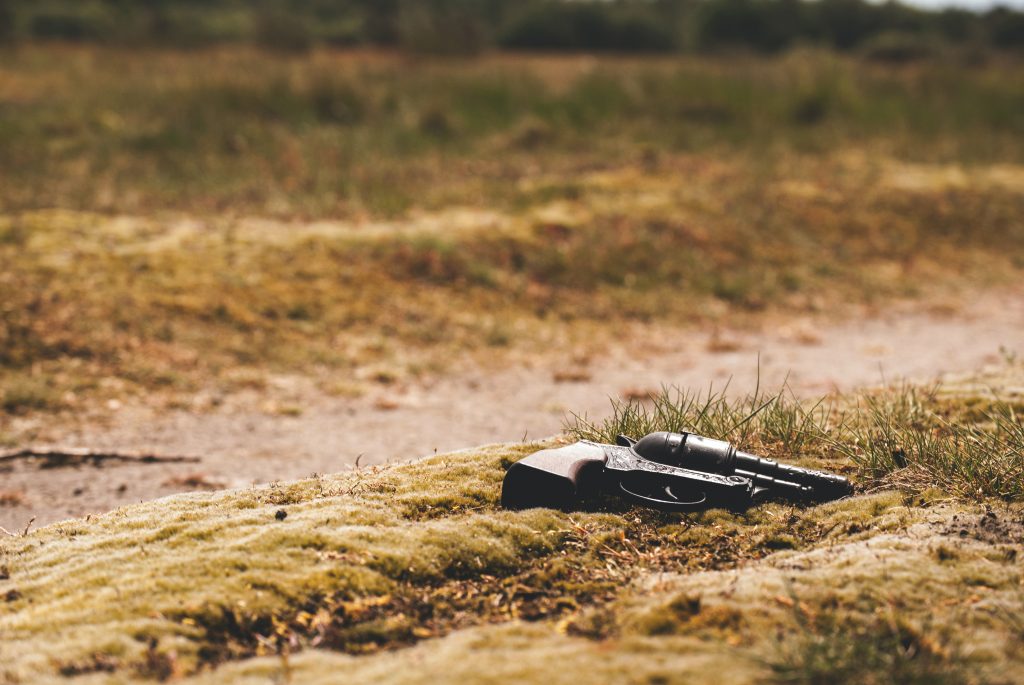
Analysis: Complacency Was Deadly in the Alec Baldwin Shooting [Member Exclusive]
By Stephen Gutowski
There are a lot of things that had to go wrong on the set of Alec Baldwin’s latest movie for a crew member to end up shot dead. Live ammunition had to make its way into the gun and it had to be pointed at Halyna Hutchins when it fired. And, nobody had to step in to stop either of those steps along the way.
But, there’s one factor that underlies all of those mistakes: complacency.
As with all safety protocols, those designed to keep the crew safe on a movie set while guns are being handled only provide protection so long as everyone is vigilant in following them. That responsibility falls first and foremost with the person on set who is responsible for overseeing gun safety on set. However, it extends to anyone involved in handling the firearms or setting up scenes that use them.
The attitude Baldwin displayed towards safety protocols belays a serious problem on the set of Rust and, perhaps, across the industry.
“When that person who was charged with that job handed me the weapon, I trusted them,” Baldwin told ABC News.
There is nothing wrong with trusting the professional who is there to oversee the guns. But, Baldwin’s approach goes much further than just that. When asked what the actor’s responsibility is in regards to gun safety on set, he took an extremely narrow view.
“The actor’s responsibility is to do what the prop armorer tells them to do,” he said.
He said he developed his approach early in his career after being admonished by a prop master for attempting to check the loadout of a prop gun.
“If I took a gun and I popped the clip out of a gun or I manipulated the chamber on a gun, they would take the gun away from me and redo it,” Baldwin said. “The prop person said ‘don’t do that’ when I was young.”
There is a reasonable concern with actors messing up the loadout for the scene, but the next piece of advice Baldwin was given is completely unreasonable. And, unfortunately, it stuck.
“They’d say ‘one thing you need to understand is we don’t want the actor to be the last line of defense against a catastrophic breach of safety with the gun,'” Baldwin told ABC News. “They told me ‘my job is to make sure the gun is safe and then I hand you the gun and declare that it’s safe. The crew is not relying on you to say it’s safe. They’re relying on me to say that it’s safe.'”
Actors should not be the only line of defense on set when it comes to gun accidents. However, the idea they have no agency in the matter and are mere vessels for what somebody else tells them is absurd. Anyone handling a gun should understand the risks involved and how to mitigate those risks.
It is not necessary for the actor themselves to physically check the state of the gun in order for them to be involved in keeping everyone on set safe. In fact, Baldwin describes the exact procedure for accomplishing this during his interview.
“The prop person would come and sometimes they would insist on demonstrating for you and the camera crew,” he said. “They would take the gun, if it was a contemporary gun, they’d show you the chamber, they’d show you the clip, they’d say ‘the gun is cold.'”
An actor could, and should, request this procedure be done each time they’re handed a gun in order to verify things are as they should be. Baldwin said he didn’t speak up when other armorers didn’t employ this procedure because he “trusted them to do the job.”
“And I never had a problem,” he said.
Until he did. And that’s always the problem with becoming complacent while handling weapons. Just because being lax or transferring all your safety responsibilities to somebody else worked before, even for 40 years, doesn’t guarantee it will always work.
But, as he said, this is how Baldwin had always done things and it hadn’t been a problem. He’d grown accustomed to handling guns on set without needing to do anything other than trusting the word of whoever handed it to him. He’d become comfortably complacent.
He wasn’t alone either.
Lisa Torraco, a lawyer for Assistant Director Dave Halls, said checking the gun to ensure it wasn’t loaded before he handed it to Baldwin was not his responsibility either. She added that “expecting an assistant director to check a firearm is like telling the assistant director to check the camera angle or telling the assistant director to check sound or lighting.”
At least three people handled the gun before it was used to accidentally kill Halyna Hutchins. Two of them now argue they had zero responsibility to ensure the gun was, at the very least, not loaded with live ammunition.
Somebody, anybody, should have spoken up. Should’ve done something.
But, nobody did. Because that’s how they’d always done it. And, even if it always added to the danger level, it hadn’t been a problem.
Until it was.
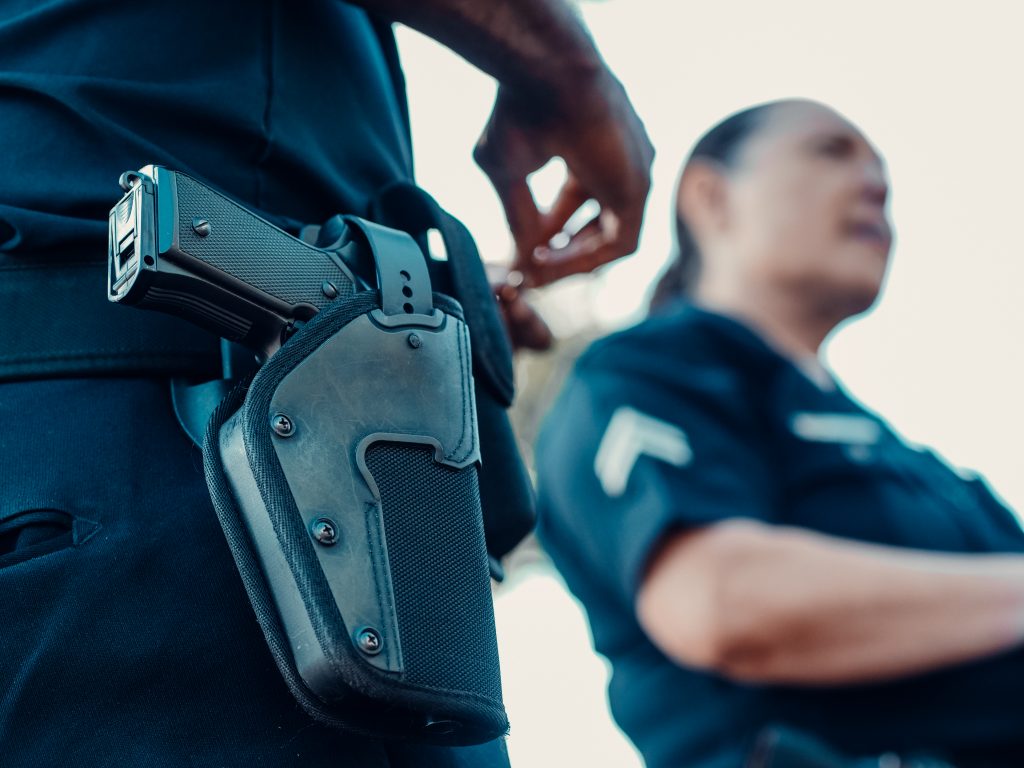
Analysis: The Peculiar California Gun Law that Helped Fuel an LAPD Black Market [Member Exclusive]
By Jake Fogleman
Police in California keep getting caught illegally trafficking guns. What’s causing this phenomenon?
California is the only state in the country with what is known as a “handgun roster.” Under the Unsafe Handgun Act, only handguns deemed “safe” are eligible to be placed on California’s roster of certified firearms approved for civilian sale. Handguns deemed “unsafe” are generally unavailable for commercial sale in the state, with one crucial exception: law enforcement.
As the law is currently written, members of law enforcement are free to purchase and use “unsafe” handguns. As a new LA Times report uncovered, some officers use that carveout to turn an illicit profit in secondhand gun sales.
“The investigators questioned whether the officers were selling more guns than they should be under state and federal laws, particularly as some of the guns they’d sold were ‘off-roster,’” the report said. “In California, older firearms without certain safety features are excluded from an approved ‘roster’ of guns that can be commercially sold in the state. However, the law allows for law enforcement officers to still purchase those weapons—which, because their sale is restricted, are worth a lot of money.”
And the scandal documented in the report is certainly not the first time that California police officers have illegally profited off of their handgun roster exemptions.
Why Does This Happen?
This keeps happening because of the criteria by which California determines which handguns are safe or not and the propensity for highly desirable makes and models to wind up on the “unsafe” list.
To be deemed safe, handguns are required to possess certain features. Semiautomatic pistols, for example, must have a manual safety, a chamber load indicator, a magazine disconnect mechanism if it has a detachable magazine, and microstamping technology.
While most of those features come standard on many modern pistols—or they are relatively easy for gun makers to accommodate with separate California compliant models—the microstamping mandate is a different story. Microstamping is a process that uses a tiny laser to engrave a unique serial number on a gun’s firing pin so that, in theory, it imprints on the primer of discharged ammunition.
Proponents of the technology argue that it aids law enforcement in identifying guns used in crime. Opponents, however, have pointed out serious flaws.
“Microstamping is unproven and unworkable technology,” Larry Keane, Senior Vice President of the National Shooting Sports Foundation (NSSF), wrote in a March 2021 article. “Todd Lizotte, who holds the patent for the sole-source microstamping technology, recognized this reality in a peer-reviewed study: ‘Legitimate questions exist related to both the technical aspects, production costs, and database management associated with microstamping that should be addressed before wide-scale implementation is legislatively mandated.’”
What is the Result?
Because of the serious concerns surrounding the feasibility and cost of implementing microstamping technology—combined with the litany of other features restrictions under existing California law—many firearms manufacturers have decided it’s not worth it to continue making new California compliant firearms.
This has resulted in bizarre bifurcations between allowable handgun models with seemingly no difference in safety features. For example, the Glock 19—likely the best-selling handgun of all time—is only legal for civilian sale in California in its 23-year-old Generation 3 version. Meanwhile, its newer Generations 4 and 5 counterparts are deemed too “unsafe” to trust in civilian hands.
The NSSF has documented the effect of microstamping requirements on an already constrained supply of lawfully available handguns in the state, noting that no new handguns have been approved since the microstamping requirement was enacted.
“When the initial microstamping law took effect in 2013, there were 953 pistols on the roster. As of November 2020, there were only 497,” the group said.
Exacerbating this issue is the recently passed Assembly Bill 2847. Set to go into effect in July of 2022, it will automatically remove three previously approved handguns from the roster for every new model the state approves.
The result of all of this is a diminishing supply of handguns in a state that, despite popular misconception, actually contains a fair amount of gun owners and has seen a massive spike in demand for guns since 2020.
Until the technology becomes feasible and desirable for gun manufacturers, or as long as the exemption for law enforcement remains in place, expect to see corruption stories continue out of California police departments. As the supply of legal-to-purchase handguns continues to dwindle, excluding ever more models of popular pistols enjoyed safely by gun owners across the country, the demand for obtaining them through unscrupulous means is sure to continue.
For some police, that demand will inevitably create enough incentive to work as illegal intermediaries.
Podcast: The Heritage Foundation’s Amy Swearer On California’s Magazine Confiscation Law Being Upheld [Member Early Access]
By Stephen Gutowski
The Heritage Foundation’s Amy Swearer joins us this week on the podcast. As a Second Amendment policy wonk at one of the top conservative think tanks in D.C., she provides some salient critiques of the logic behind many of the most prominent gun-control policies.
We talked about the reasoning in the Ninth Circuit’s majority opinion upholding California’s magazine confiscation law as an example of that logic. Amy explains why she believes arguments for restricted “assault weapons” or magazines that hold more than ten rounds based on the idea they are “designed for the battlefield” don’t hold water. She points to the common ownership of both in civilian circles and the arbitrary nature of the laws banning them as prime evidence the policies aren’t fitting. And she notes the fact that the laws almost always exempt police, even off-duty and retired officers, from the restrictions is further evidence the main concern is not about the military usefulness of the guns and magazines.
We also took some time to discuss a new initiative from the Biden Administration that should actually be encouraging for gun owners. Unlike previous efforts from the president, this one focuses on voluntary measures and awareness campaigns to try and curb suicides among gun owners and veterans alike. Amy said the plan is something the administration has done little to publicize but is actually a step in the right direction.
Plus, Jake Fogleman and I discuss the latest developments in the Alec Baldwin shooting. I go over why it’s possible his gun fired without the trigger being pulled, but extremely unlikely. And, Jake gives a more detailed look at the specifics of the Ninth Circuit ruling as well as the likely fallout from it.
You can listen to the podcast on your favorite podcasting app or by clicking here.
You can also watch the video version on our YouTube channel.
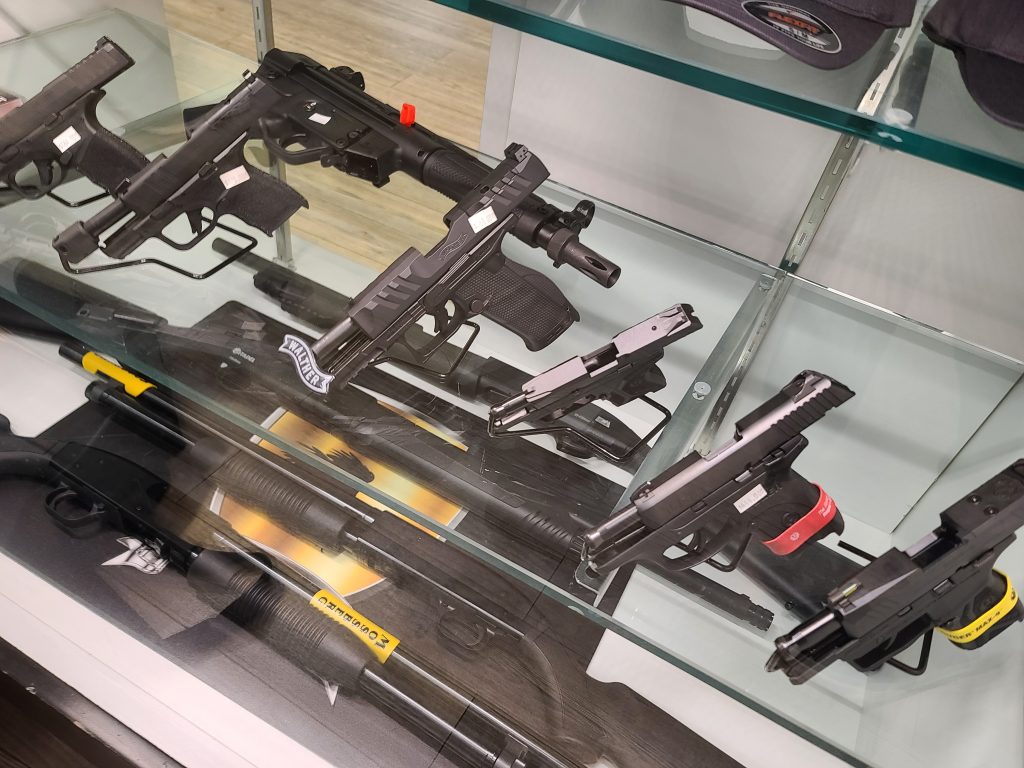
Analysis: A Close Look at Black Friday’s Gun Sales Numbers [Member Exclusive]
By Stephen Gutowski
Gun sales for this year’s Black Friday managed to outpace last year’s numbers. That’s pretty remarkable given that last year’s record-setting pace. So, I thought it was worth a closer look.
The FBI processed 187,585 gun-related background checks on Friday alone. That made it the 10th-best day of all time. Interestingly, it didn’t make it the best Black Friday even as it surpassed 2020.
Black Friday 2017 and 2019 did better than 2020 or 2021.
Some of this could be explained by a shift in recent years by the industry towards spreading out Black Friday sales across an entire week to avoid overstressing the National Instant Criminal Background Check System (NICS). Black Friday week 2021 saw 687,788 NICS checks. But that, oddly, doesn’t put it into the top ten weeks of all time.
2021 dominates when it comes to both best days and weeks, though. This year holds six of the top ten weeks and seven of the top ten days on record for NICS checks. By contrast, 2020 holds just one of the top days and three of the top weeks.
That’s all a bit strange since 2020 holds the all-time record for gun sales in a year. And, it’s very likely to keep that crown with 2021 finishing a relatively close second.
These numbers don’t mesh mainly because of the difference between the FBI’s raw NICS numbers and the National Shooting Sports Foundation’s (NSSF) adjusted numbers. The raw numbers count all NICS checks, including those that aren’t for gun sales. NSSF takes those numbers and splits out the gun sales number from other checks like those for gun-carry permits.
The raw numbers have become further uncoupled over the past few years as a number of large states have begun rechecking all of their gun-carry permit holders every month. Since the FBI does not provide a detailed breakdown of NICS checks in its single-day or single-week rankings, that likely explains why 2021 is doing so much better in those metrics than 2020.
Of course, this is also evidence there are many more gun-carry permits this year than last. At the very least, that is something that we can glean from comparing the NSSF and raw NICS numbers.
And, comparing single-day raw NICS numbers are apples-to-apples comparisons. So, they show 2021 sales can top even 2020 at points.
Ultimately, they demonstrate demand for guns and the desire to carry them has risen in the United States. And it’s unlikely to fall back to the levels it was at before the onset of the pandemic and everything that came along with it.
That’s it for now.
I’ll talk to you all again soon.
Thanks,
Stephen Gutowski
Founder
The Reload





